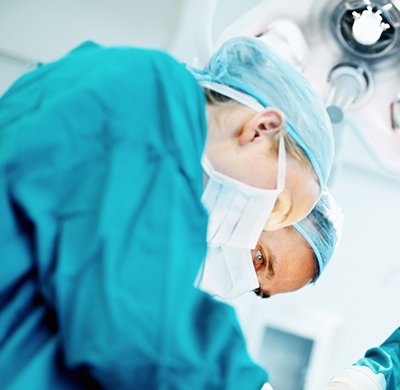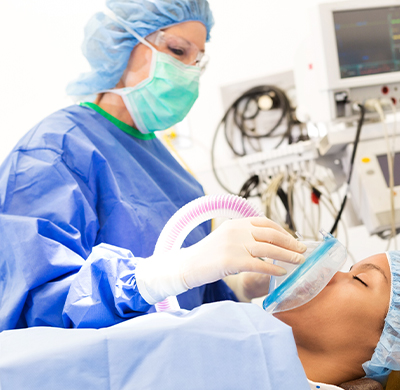Welcome to the Patient Education Library of Southern Regional Pain Services
Cervical Degenerative Disc Disease - Spinal Cord and Nerve Compression
Click the white PLAY button to start video.
Read more about Cervical Degenerative Disc Disease - Spinal Cord and Nerve Compression
Introduction
Anatomy
Seven vertebrae make up the cervical area of your spine. The back part of the vertebra arches to form the lamina. The lamina creates a roof-like cover over the back of the opening in each vertebra. The opening in the center of each vertebra forms the spinal canal.
Causes
Symptoms
Diagnosis
X-rays will be used to see the condition of the vertebrae in your neck.
Computed tomography (CT) scans and magnetic resonance imaging (MRI) scans may be used to provide a better view of your cervical structures. CT scans provide a view in layers, like the slices that make up a loaf of bread. CT scans are used to show the shape and size of the spinal canal and the structures in and around it.
Your doctor may inject a dye into the disc in a procedure called a discogram. A discogram provides a view of the internal structure of a disc and can help to identify if it is a source of pain. A CT scan usually immediately follows it. This procedure is performed in an operating room.
Treatment
Anterior cervical decompression and spine fusion (ACDF) surgery is commonly used to treat cervical degenerative disc disease. ACDF surgery is performed through an incision at the front of the neck. Your surgeon will make an incision approximately two inches long on the front of your neck, carefully avoiding your throat and airway. Your muscles and arteries will be moved aside with care to allow access to the vertebrae. Your surgeon will remove abnormal disc and bone structures.
Next, the surgeon places a bone graft or interbody fusion cage to replace the disc and support the cervical spine. Surgical hardware including plates and screws may be used. The surgical hardware secures the vertebrae together and allows the bone grafts to heal.
At the completion of your ACDF surgery, your surgeon will close your incision with stitches. You will receive pain medication immediately following your surgery. You will wear a neck brace or collar while your fusion heals.
You should expect to stay overnight in the hospital. You may need some help from another person during the first few days or weeks at home.
Following surgery, your doctor will initially restrict your activity level and body positioning. You should avoid lifting, housework, and yard-work until your doctor gives you the okay to do so. Once your neck has healed, physical therapists will teach you flexibility and strengthening exercises. You will also learn body mechanics, proper postures for your spine, to use when you stand, sit, and lift objects.
Prevention
Am I at Risk
There are several factors that may increase the risk for developing degenerative disc disease including:
_____ Physically active young adults and middle-aged adults have an increased risk of developing degenerative disc disease.
_____ Trauma increases the risk of the condition.
_____ Arthritis and the natural aging process increase the risk of degenerative disc disease.
Complications
Untreated degenerative disc disease can lead to irreversible neurological damage when this condition is causing neurological signs and symptoms.
Advancements

Copyright © - iHealthSpot Interactive - www.iHealthSpot.com
This information is intended for educational and informational purposes only. It should not be used in place of an individual consultation or examination or replace the advice of your health care professional and should not be relied upon to determine diagnosis or course of treatment.
The iHealthSpot patient education library was written collaboratively by the iHealthSpot editorial team which includes Senior Medical Authors Dr. Mary Car-Blanchard, OTD/OTR/L and Valerie K. Clark, and the following editorial advisors: Steve Meadows, MD, Ernie F. Soto, DDS, Ronald J. Glatzer, MD, Jonathan Rosenberg, MD, Christopher M. Nolte, MD, David Applebaum, MD, Jonathan M. Tarrash, MD, and Paula Soto, RN/BSN. This content complies with the HONcode standard for trustworthy health information. The library commenced development on September 1, 2005 with the latest update/addition on February 16, 2022. For information on iHealthSpot’s other services including medical website design, visit www.iHealthSpot.com.






